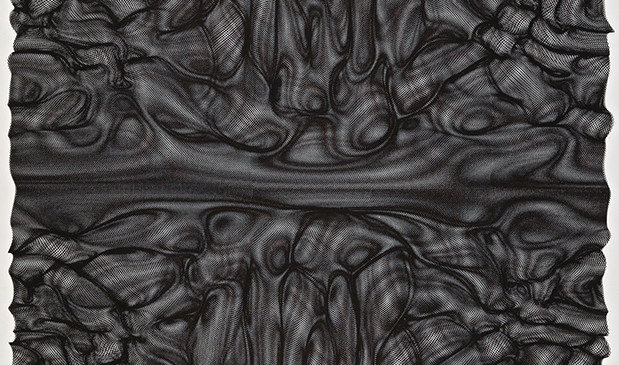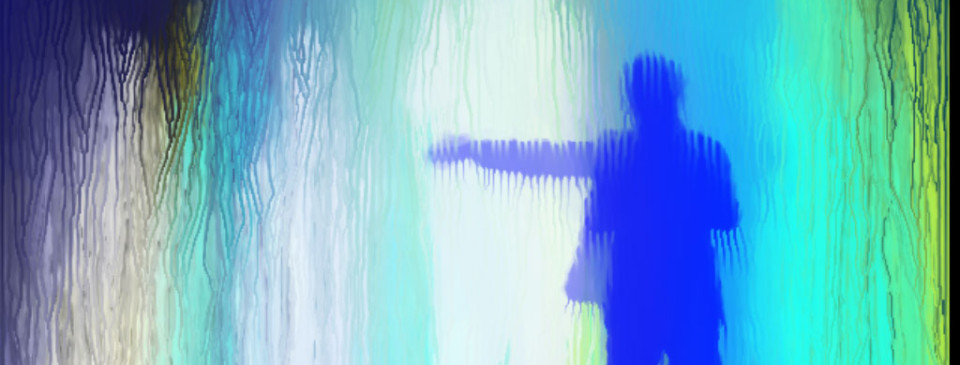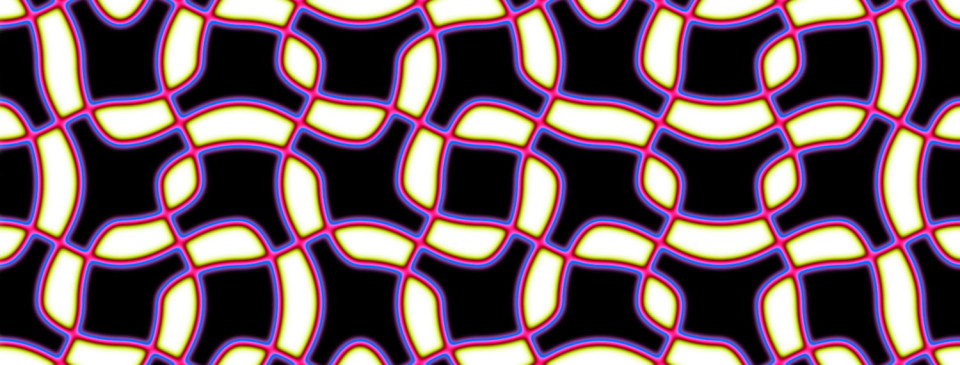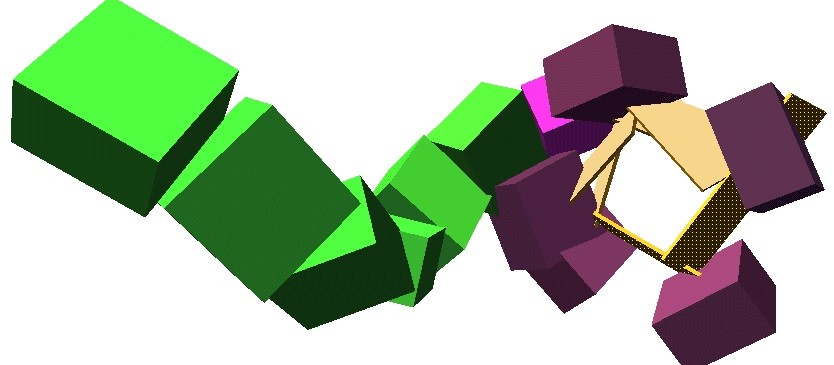Code as Muse
Issue 23 April 2016

Drawing is just a thought
Jean-Pierre Hébert is considered a pioneer in the field of digital art from the mid-1970s on. He has developed his personal computer code into a powerful tool that drives plotters and custom-built devices, pushing the artistic and technical boundaries and creating an original, extensive body of work. Long before modern computer displays allowed one to pre-visualize an idea, Jean-Pierre was imagining and creating amazingly complex pieces, existing only in his mind—and in his code. Hébert produces works on paper, including ink and pencil drawings, etchings and dry points from polymer and copper plates. He also creates sand, water and sound installations, and artist’s books.
The aim of his work remains an expression of quiet beauty and peaceful meditation.
Jean-Pierre Hébert co-founded the Algorists in 1995 with Roman Verostko. Since 2003, he has been artist-in-residence at the Kavli Institute for Theoretical Physics at the University of California, Santa Barbara, where he has organized and curated several Algorist group shows. In 2012, he received the ACM Siggraph Distinguished Artist Award for Lifetime Achievement in Digital Art.
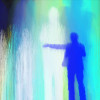
Code as Muse
Alex May is a British artist exploring a wide range of digital technologies, most notably video projection onto physical objects (building on the technique known as video mapping or projection mapping by using his own bespoke software), also interactive installations, generative works, full-size humanoid robots, performance, and video art. Alex is head of Projective Geometry at The Institute of Unnecessary Research.
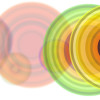
The Color of Data
Fernanda Viégas and Martin Wattenberg are pioneers in data visualization and analytics. Their research has helped shape the field, and the systems they’ve built are used daily by millions of people. As leaders of Google’s data visualization research group, they focus on finding new ways for users to understand and explore data. Viégas and Wattenberg are also known for visualization-based artwork, which has been exhibited in venues such as the Museum of Modern Art in New York, London Institute of Contemporary Arts and the Whitney Museum of American Art

Notes Towards a History of Art, Code and Autonomy
“In this paper I will present a view of developments in the history of art, code, and autonomy. This view is not intended to be complete or all embracing but it traces a significant and often ignored line of development in twentieth century art as seen from the perspective of the author’s experience.” Paul Brown studied at Liverpool Polytechnic, and then at the Slade School of Art, London, in the late 1970s. At the Slade he was part of a pioneering group, working with generative systems that would later become known as artificial life or ‘alife’. In 1988 he moved to Australia, where he has become a central figure in the development of the electronic arts, both in that country and internationally.
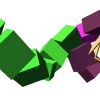
Aesthetically Evolved Virtual Pets
“Aesthetic, emotional, and empathetic selection are applied to a derivative of Karl Sims’ Evolved Virtual Creatures. The resulting Creatures can be beautiful or strange, and provoke strong reactions in human observers. It may be possible to evolve virtual pets to which humans can form strong emotional bonds.” From 1990 to 2001, Thomas Ray conducted research on digital evolution, which means exploring what happens when evolution by natural selection is embedded in the medium of digital computation. This work began with the creation of ‘Tierra’, a system in which self-replicating machine code programs evolved by natural selection. In 2000, he implemented a new system called ‘Virtual Life’. In 2014, his ‘Aesthetically Evolved Virtual Pets’ video was runner-up in the Virtual Creatures competition at GECCO.

Code as Muse videos (blog link)
Featuring : Cybernetic Serendipity (ICA) – Late Night Lineup (1968) …………….. The story of Cybernetic Serendipity Music ……………. Karl Sims: Evolving Virtual Creatures with Genetic Algorithms……………. Thomas Ray: Project Tierra ……………. Robert Rowe: Iannis Xenakis and Algorithmic Composition.
